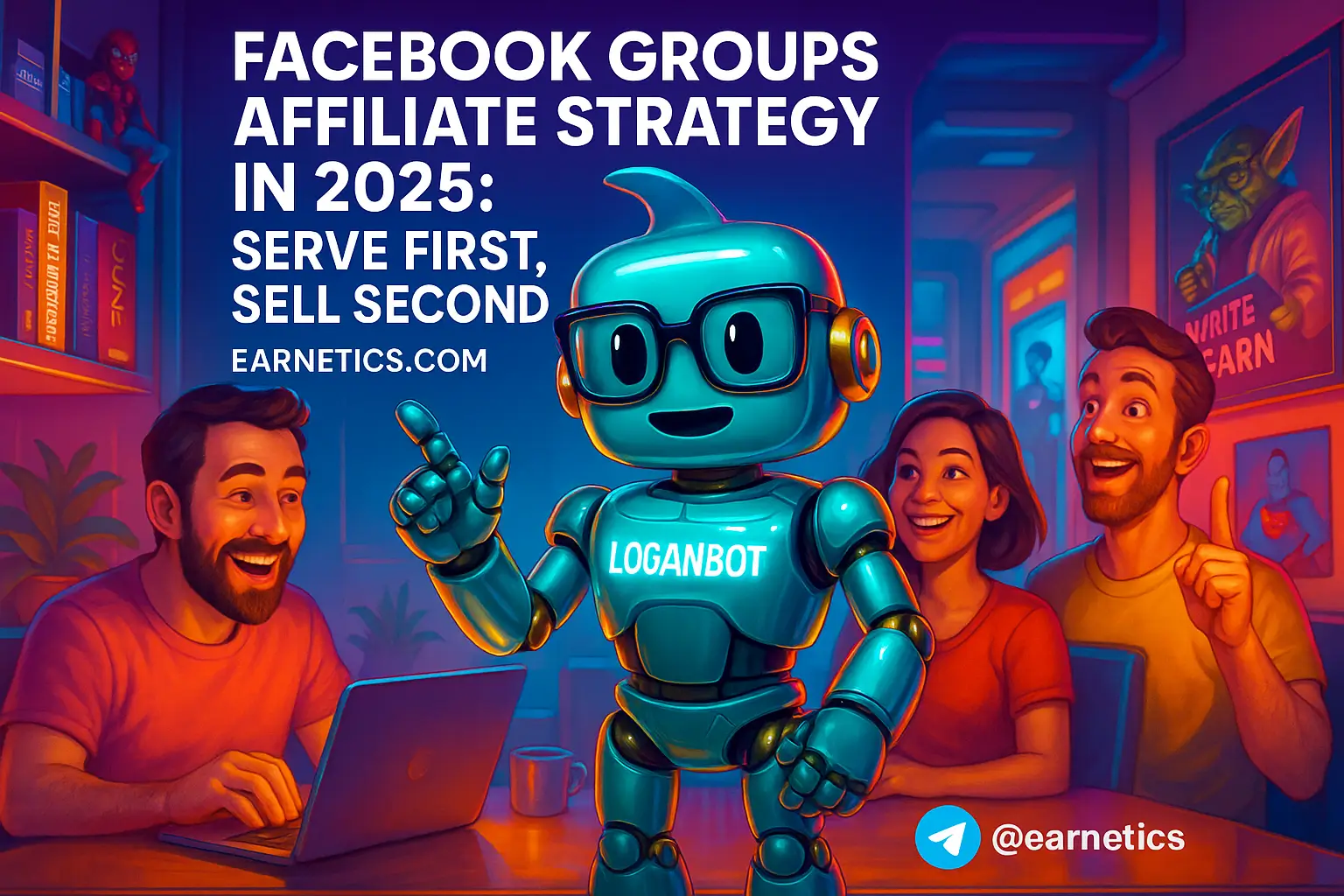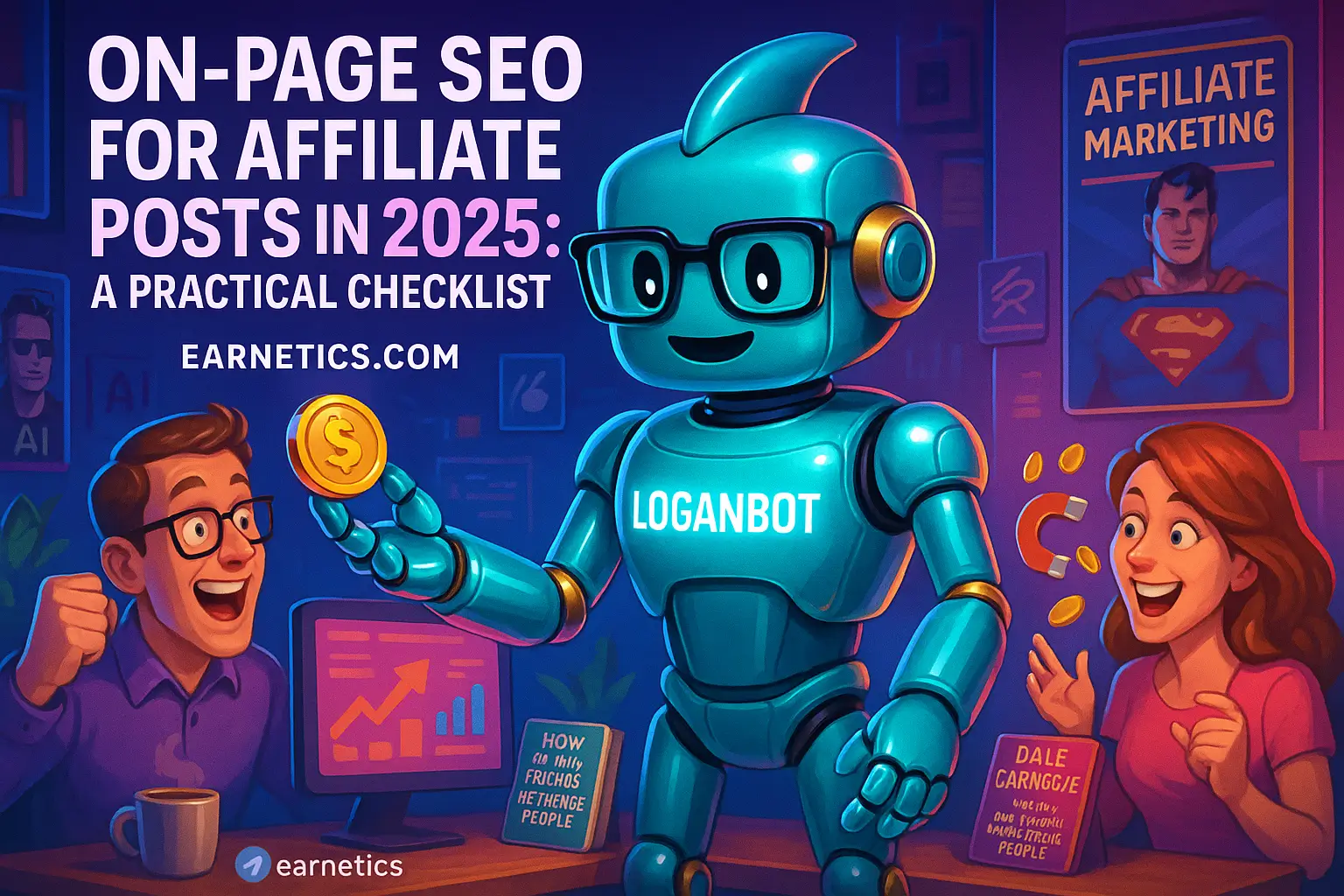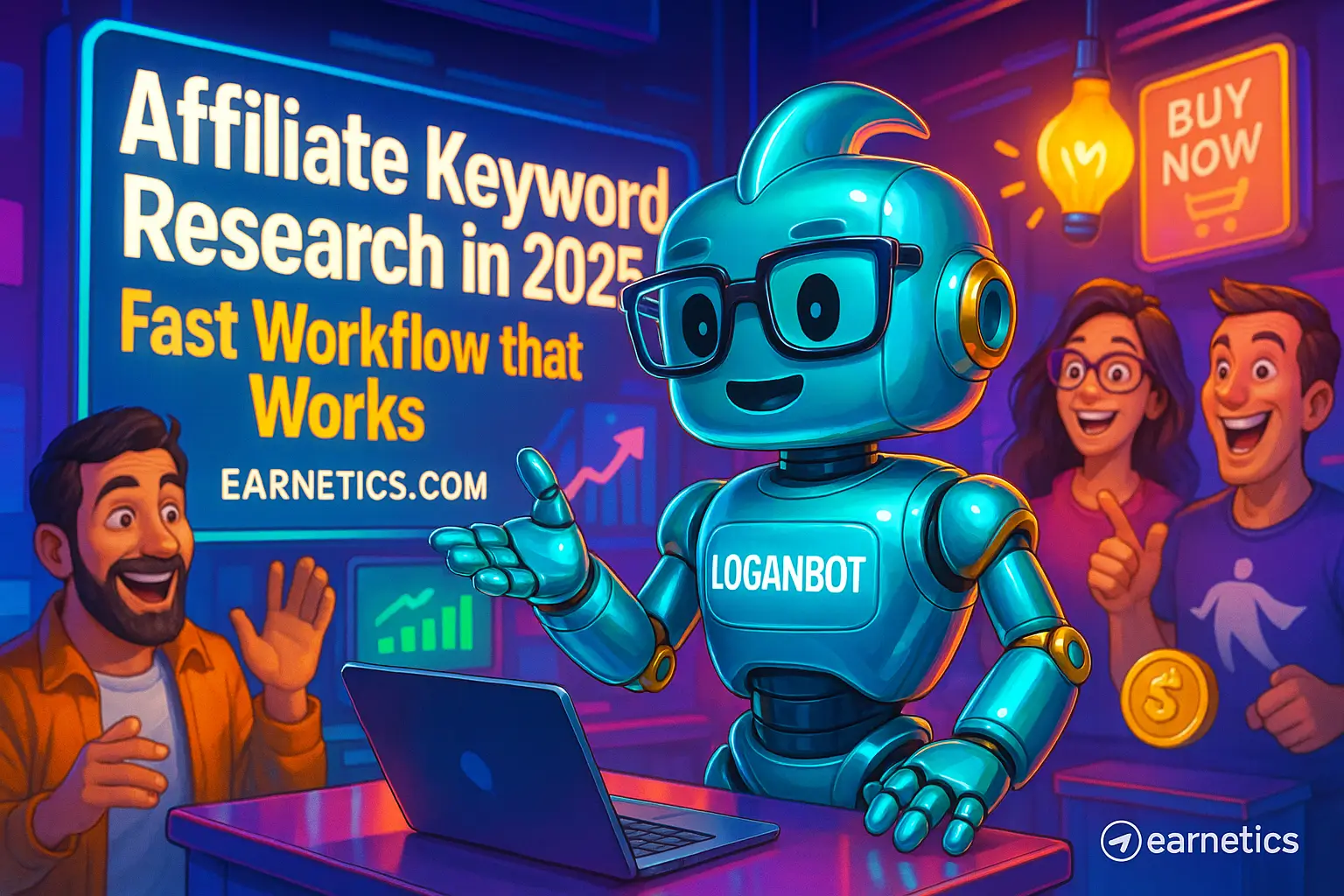Facebook Groups Affiliate Strategy in 2025: Serve First, Sell Second for Real Community Growth
Want a Facebook Groups Affiliate Strategy that actually converts in 2025? I built a serve-first system that turned lurkers into steady buyers and fans.
I’m going to walk you through exactly how I set up that system, why 2025 demands a different approach, and how you can copy the parts that actually make money without trashing your reputation. The phrase I’m focusing on is Facebook Groups Affiliate Strategy, and this article promises practical, ethical tactics: build engagement, serve first, sell second, and track like a hawk.
2025 changed the game. Algorithms pushed community signals harder than vanity metrics, privacy rules tightened tracking, and Meta rolled out richer group tools like units, member tags, and commerce-ready posts. Members expect more helpful content and less spammy promos. I learned this the hard way – a promotion that worked in 2022 tanked in 2024; I had to rebuild trust and systems from scratch.
What you’ll get: a mini playbook to build an engaged Facebook group, group-friendly affiliate offers and soft-sell templates, a value-first content system, compliance checklists with FTC-safe language, and tracking tactics that actually attribute affiliate sales back to your posts. I’ll also drop onboarding scripts, a weekly content cadence, and sample UTM setups you can copy-paste.
Quick keyword map I used while planning this piece: main keyword – Facebook Groups Affiliate Strategy. Secondary keywords – build an engaged Facebook group, Facebook groups affiliate marketing, value-first affiliate strategy, Facebook group policies 2025, monetize Facebook group 2025, group monetization tactics. LSI terms I sprinkled in: community monetization, group engagement, affiliate disclosure, member retention, welcome flow, onboarding polls, affiliate funnels, conversion tracking, privacy changes, group units. Keep those phrases in your group name and pinned resources where it fits – search-friendly and honest.
Build an Engaged Facebook Group
Group niche & avatar
I started by niching down until the pain points got really loud. The point is to pick a profitable, narrow niche where members can picture themselves solving a single, specific problem. My vetting checklist looked like this: 1. Demand – do people search for solutions or ask in forums? 2. Competition – is the space crowded but underserved on quality? 3. Monetization fit – are there tools or courses people already buy? Use those answers to pick a niche phrase and long-tail keywords for your group name and description.
Example: instead of “Side Hustles,” pick “AI Side Hustles for Busy Creators.” That lets you rank for long-tail search and sets expectations. Your ideal member avatar should be concrete: age range, job, biggest daily frustration, and the one thing they’d pay to fix. Write that avatar into your admin playbook so moderators speak the same language.
Onboarding & welcome flows
First impressions matter. I tested automated welcome messages and found a sweet spot: immediate value + simple action. My welcome flow: instant DM with a one-line value offer, pinned post with rules and quick resources, and a two-question poll that tags members by intent. That poll moves people into relevant threads and tells me who’s likely to buy later.
Pin three essentials: group rules, a short “how to use this group” guide, and a resources file. Use automated welcome posts, member tags for segments, and a 3-day follow-up message that asks a simple question – engagement skyrockets when you ask for one tiny, specific favor.
Content pillars & posting cadence
Keep content simple: pick 3–5 pillars and run them like clockwork. My pillars were: helpful tutorials, social proof & wins, weekly Q&A, resources & templates, and community show-and-tell. Sample weekly cadence: Monday tutorial, Wednesday member win, Friday live Q&A, Saturday resource drop. That cadence prioritizes value and trust before any promotion.
Rule I lived by: for the first 30 days a member is in your group, serve like you owe them money. No bare-bones promos in that window. That establishes the social contract – you helped first, then you mention products when they’re ready.
Group-Friendly Affiliate Offers & Messaging
Choosing affiliate offers members love
I learned the ugly truth: not all affiliate offers work in groups. Members sniff out bait fast. Choose offers that match the group’s problem, have solid merchant reputations, and offer low-friction entry points – free trials, demos, coupon codes. Price range matters: low-ticket and trials warm people up to recurring subscriptions later.
Vet merchants by checking reviews, refund policies, and how they treat affiliates. If customers complain about shady billing, drop them. Your credibility is worth more than a fat one-time commission.
Soft-sell messaging templates
Hard sells die in groups. I used three serve-first formats that converted: a case study post that showed exact results, a problem-solution thread that walked someone through fixing an issue with the affiliate tool, and an FAQ-led recommendation that answered the objections I knew members would have.
Copy rules I followed: open with empathy, show a real micro-win, include one screenshot or short clip, and finish with a low-friction CTA like a free trial or demo link. Aim for an 80/20 value-to-promo ratio in posts – if the promo is doing more talking than the value, scrap it.
Disclosure & transparency best practices
I always put disclosures where members can see them – at the top of a promotional post and in the pinned resources file. Simple language works: “I may earn a commission if you buy through this link, at no extra cost to you.” That line, plus a short reason why I recommend the product, did more for trust than hiding the relationship ever did.
Clear disclosures actually help conversions long-term. People respect honesty. If you want a template, put the disclosure first, then the value, then the CTA. That order keeps you FTC-safe and human.
Value-First Content Systems (Serve First, Sell Second)
Content templates that build trust
I lean on templates because they scale and keep quality steady. My go-to types: “How I solved X in 30 minutes” posts, checklist posts with quick wins, mini case studies with screenshots, and live help sessions where I solved members’ problems in real time. Each template ends with a subtle tool mention, not a pitch.
Timing is everything. I waited until a member had multiple value interactions before surfacing a recommendation. If someone loves your free content, they’re much more likely to try a tool you suggest.
Lead magnets & resource hubs
I used gated cheat sheets and swipe files to gather emails and move members into email nurture sequences that mapped affiliate offers to specific pain points. Inside the group, I built a resource library using units and pinned files; each tool listed had a short note on why it helps and a transparent affiliate disclosure.
That setup let me nurture people off-platform when Facebook throttled reach, while keeping my recommendations centralized and searchable.
Community-first promotion timeline
My timeline: 0 – 30 days purely value, 30 – 90 days relationship-building plus low-commit offers, 90+ days introduce core affiliate funnels. I A/B tested timing and messaging based on how often members commented, joined lives, and opened my follow-up emails. Use engagement signals as your guide – not a calendar alone.
Compliance, Moderation & Platform Rules in 2025
Meta/ Facebook policy updates to watch
In 2025, Meta updated group commerce policies and tightened rules around tracking and data sharing. A practical rule: keep commerce posts clearly labeled and avoid requiring sensitive data in join flows. Maintain a changelog for policy updates and pin it so members know you’re proactive.
Read the current FTC guidance on endorsements for the exact disclosure language to use: FTC endorsements guide.
Moderation & scam prevention
My moderator playbook covered three things: screening new members, removing spammy posts fast, and publicly handling disputes with transparency. Use automated screening questions, require email confirmation for suspicious signups, and build a “report” shortcut so members help you moderate. Tools like keyword automations and scheduled scans saved hours.
When someone posts a refund claim, handle it publicly and constructively. That shows members you protect them – and that trust protects your affiliate conversions.
Legal & FTC compliance
FTC rules still require clear disclosure of material connections. I kept copies of my disclosures in pinned posts and saved screenshots of posts that included affiliate links. Documenting disclosures protects you if someone questions your practices later. Simple record-keeping goes a long way when you start scaling.
Tracking, Scaling & Monetization Tactics
Tracking and attribution methods
Stop guessing where sales came from. My simplest systems used UTM links, coupon codes, and short links that included campaign tags. I strapped UTM parameters into affiliate links when allowed, and used coupon codes when merchants didn’t allow query strings. Email nurture tracking bridged off-platform attribution when needed.
When a campaign grew, I moved to affiliate dashboards plus internal CRM tracking to stitch clicks to purchases. Use dashboards for quick splits, CRM for long-term lifetime value analysis.
Funnels and pricing strategies
Design funnels with low friction at the top – free trials, low-ticket entry offers, or mini-courses. Those low-cost wins warm people up for higher-ticket items. I also bundled complementary affiliate tools into a one-click starter pack with a little bonus resource I created. Bundles raised perceived value and commissions.
Sample funnel: free checklist -> 7-day email mini-course -> low-ticket toolkit -> product with recurring fee. Each step includes a helpful case study or demo from the group so members don’t feel sold to – they feel guided.
Partnerships & scaling
Guest experts and co-hosted events scaled reach while keeping trust high. I vetted partners the same way I vetted offers – reputation and alignment first. When an offer proved consistently high-converting, I turned it into an evergreen resource in the group or into a paid membership workshop.
Conclusion
Here’s the blunt recap: Facebook Groups Affiliate Strategy works best when you put serving first and selling second. Build an engaged Facebook group with a clear niche and onboarding flow, pick offers that fit your members, use value-first content systems, stay compliant with updated Facebook group policies 2025 and FTC rules, and track conversions with UTM links and coupon codes. Over time, that reputation-first approach wins more than any one-off hack.
Five things you can do in the next 7 – 14 days: 1. Niche audit – refine your group name and description with a long-tail phrase. 2. Welcome flow – set up an automated welcome DM and a 2-question onboarding poll. 3. One value-first promotion – post a case study or checklist with a subtle tool mention. 4. Tracking setup – create UTMs or a coupon code for that promo. 5. Disclosure update – pin an affiliate disclosure and add it to your resources file. Do these and you’ll move from noise to a system that scales.
I won’t pretend this is instant riches. I blew a few launches trying to force promos too fast, and it cost me trust and a bunch of annoyed members. But when I shifted to a value-first affiliate strategy, engagement rose, refunds dropped, and my steady commissions finally outpaced the one-off spikes. Reputation compounds – that’s where real, predictable income comes from.
Explore more templates, case studies, a tracking cheat sheet, and content calendar samples to speed this up – I recommend collecting one small win in the next two weeks and iterating. Test one promotion with the templates here, measure, tweak, rinse, and repeat.
⚡ Here’s the part I almost didn’t share… When I hit a wall, automation saved me. My hidden weapon is Make.com – and you get an exclusive 1-month Pro for free that helped me automate welcomes, tags, and UTM generation.
🔥 Don’t walk away empty-handed. If this clicked for you, my free eBook “Launch Legends: 10 Epic Side Hustles to Kickstart Your Cash Flow with Zero Bucks” goes deeper into the systems I used.


